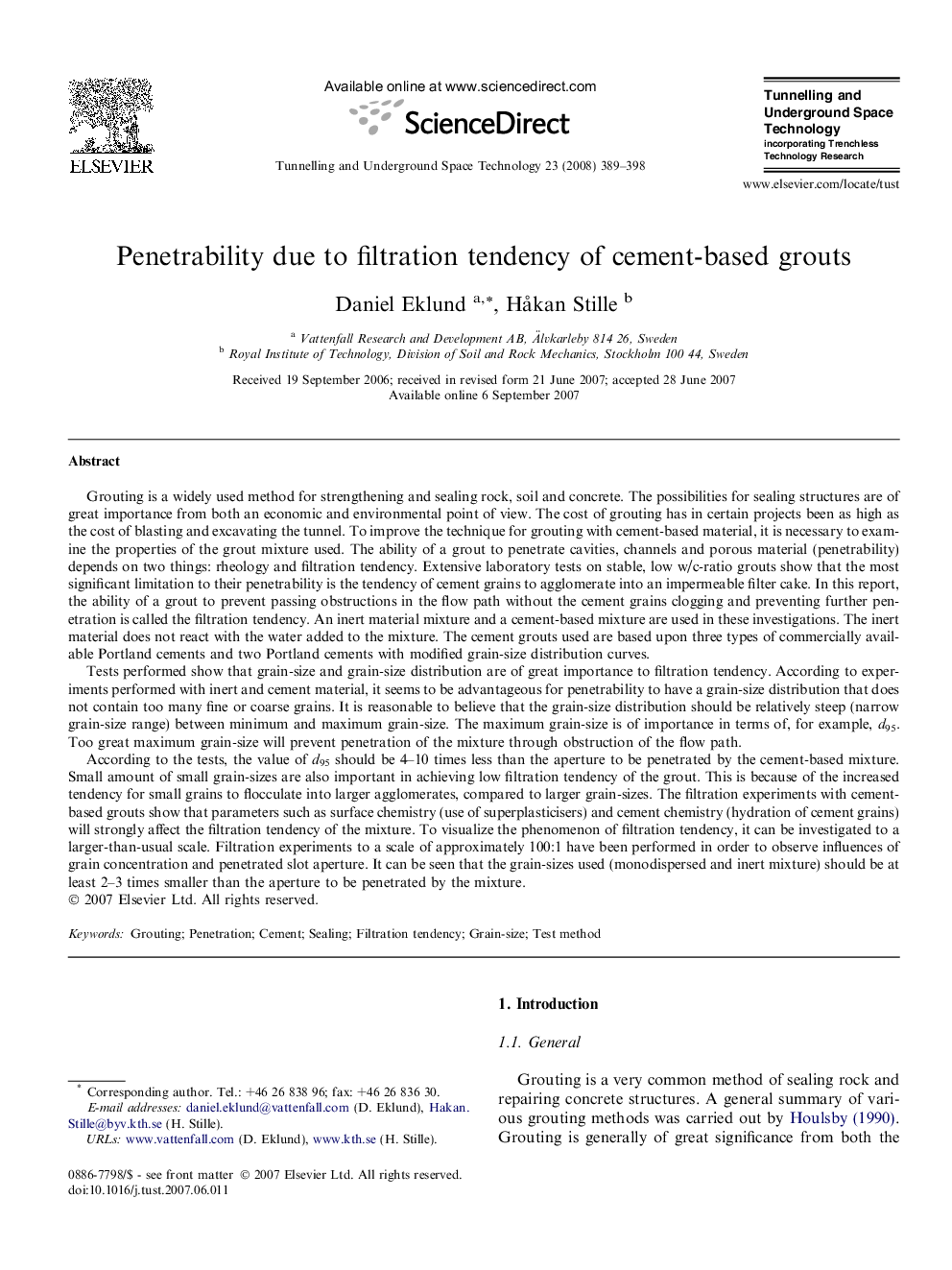| کد مقاله | کد نشریه | سال انتشار | مقاله انگلیسی | نسخه تمام متن |
|---|---|---|---|---|
| 312020 | 534172 | 2008 | 10 صفحه PDF | دانلود رایگان |

Grouting is a widely used method for strengthening and sealing rock, soil and concrete. The possibilities for sealing structures are of great importance from both an economic and environmental point of view. The cost of grouting has in certain projects been as high as the cost of blasting and excavating the tunnel. To improve the technique for grouting with cement-based material, it is necessary to examine the properties of the grout mixture used. The ability of a grout to penetrate cavities, channels and porous material (penetrability) depends on two things: rheology and filtration tendency. Extensive laboratory tests on stable, low w/c-ratio grouts show that the most significant limitation to their penetrability is the tendency of cement grains to agglomerate into an impermeable filter cake. In this report, the ability of a grout to prevent passing obstructions in the flow path without the cement grains clogging and preventing further penetration is called the filtration tendency. An inert material mixture and a cement-based mixture are used in these investigations. The inert material does not react with the water added to the mixture. The cement grouts used are based upon three types of commercially available Portland cements and two Portland cements with modified grain-size distribution curves.Tests performed show that grain-size and grain-size distribution are of great importance to filtration tendency. According to experiments performed with inert and cement material, it seems to be advantageous for penetrability to have a grain-size distribution that does not contain too many fine or coarse grains. It is reasonable to believe that the grain-size distribution should be relatively steep (narrow grain-size range) between minimum and maximum grain-size. The maximum grain-size is of importance in terms of, for example, d95. Too great maximum grain-size will prevent penetration of the mixture through obstruction of the flow path.According to the tests, the value of d95 should be 4–10 times less than the aperture to be penetrated by the cement-based mixture. Small amount of small grain-sizes are also important in achieving low filtration tendency of the grout. This is because of the increased tendency for small grains to flocculate into larger agglomerates, compared to larger grain-sizes. The filtration experiments with cement-based grouts show that parameters such as surface chemistry (use of superplasticisers) and cement chemistry (hydration of cement grains) will strongly affect the filtration tendency of the mixture. To visualize the phenomenon of filtration tendency, it can be investigated to a larger-than-usual scale. Filtration experiments to a scale of approximately 100:1 have been performed in order to observe influences of grain concentration and penetrated slot aperture. It can be seen that the grain-sizes used (monodispersed and inert mixture) should be at least 2–3 times smaller than the aperture to be penetrated by the mixture.
Journal: Tunnelling and Underground Space Technology - Volume 23, Issue 4, July 2008, Pages 389–398